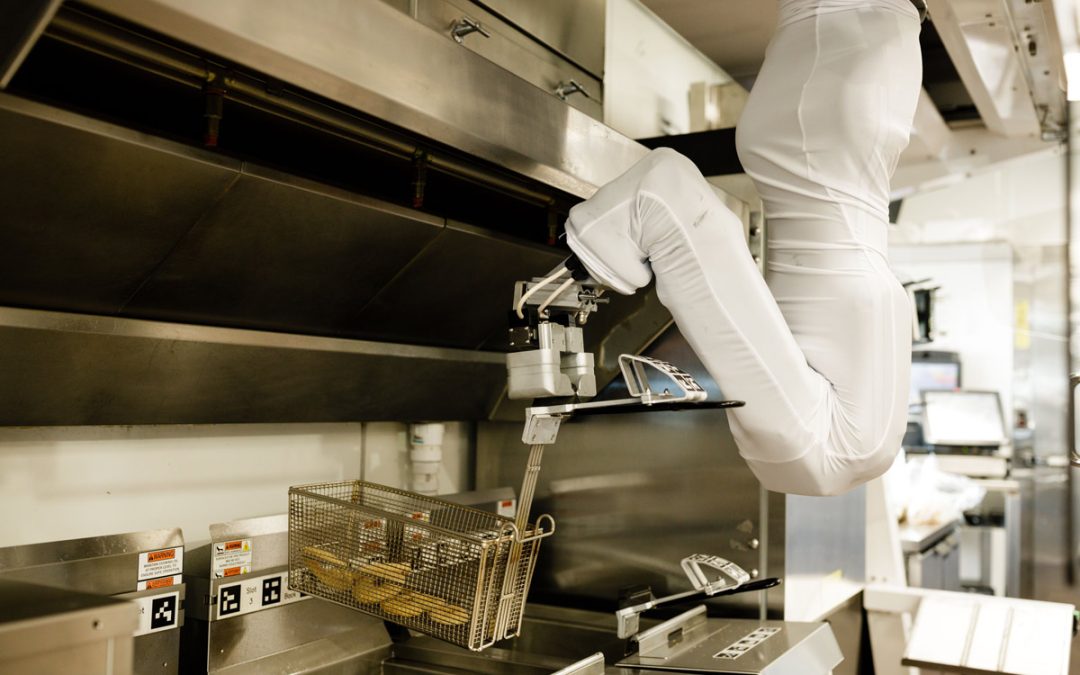Kitchen robotics are having a moment, both in terms of popular interest and investor support. Miso Robotics, the maker of “Flippy 2,” a robotic arm designed to operate a fry station and a handful of other automation products, is monetizing the interest through equity crowdfunding. Over the past two years, the company raised an impressive $50 million from more than 18,000 investors and recently announced another round of crowdfunding, hoping to raise an additional $40 million.
The crowdfunding has been done under the Regulation A+ exemption. Sometimes known as a “mini IPO,” Reg A+ allows companies to sell securities to the unaccredited public (with some stipulations) without registering those securities with the federal or state. Companies are subject to some disclosure requirements. They must publish audited financial statements and make some ongoing disclosures —and are eligible to raise as much as $75 million in a rolling 12-month period.
Miso CEO Mike Bell described equity crowdfunding as a form of passive fundraising. “As we’re sitting here, capital is flowing into Miso,” he said. “We’re bringing in tens of thousands of dollars a day, kind of automatically.” The reality is more complex — setting up the passive investment flywheel requires a lot of effort, and nothing is guaranteed—but crowdfunding obviates the need for leadership to spend their time pitching the investment to big investors. It replaces a handful of whales, which take a lot of time and effort to land, with thousands of smaller fish, which can be reeled in with ads, web content and email campaigns.
Per Bell, Miso’s success comes from its simple and intuitive value proposition. Flippy 2, its flagship product, plays right into that. Investors “don’t need a technical explanation or even a technical background” to understand what Flippy 2 does, and because basically everyone has cooked before, the need is obvious. People look at a robot frying food and say: ‘It’s about time.’”
The intuitive product has helped Miso reach outside the investor community. Flippy 2 has even been featured on The Late Show with Stephen Colbert, among other programs.
The company’s crowdfunding campaigns have also benefited from broader market shifts. Miso launched its first campaign in August 2020, a turbulent time in the economy, but thanks to stimulus payments and enhanced unemployment programs, people had money to invest and the time to find interesting opportunities. And, of course, Covid-19 and its aftershocks have disrupted the hospitality labor pool, creating a new urgency for robotic solutions like Flippy.
Miso has gone to great lengths to make its equity crowdfunding campaigns as easy to understand as its products. “We had a continual flow of questions asking why the stock was $50 or $60 a share,” said Bell. Investors were confused the early stage company’s stock was so expensive. Miso announced a seven-for-one stock split in February and is now selling shares for $10.05. The new, nominally lower price “feels better to (investors),” said Bell.
Reg A+ grants issuers the right to adjust their share price (within limits) during a campaign. Bell said the company has learned not to use that right. “Anything that confuses people or requires explanation isn’t a good idea,” he explained.
Communication is another key part of the company’s fundraising strategy. The company holds webinars for investors every couple of months, where Bell said he takes every question he can, “especially the tough ones.” It also hosts an annual shareholder’s meeting. Such efforts can entice new investors and encourage existing ones to invest again.
It helps, of course, that Miso has new and exciting things to tell its shareholders. The past 12 months have seen the company announce Flippy 2 (a new and improved version of the original Flippy robot), expand its pilot program, and announce a new partnership with Inspire Brands. White Castle recently ordered 100 Flippy 2 units, Miso’s largest commercial order to date.
What’s the purpose of raising another $40 million? “Engineers,” said Bell. The company employs 34 electrical, mechanical, design and software engineers, and is looking to hire more. Per Bell, labor is far and away Miso’s largest cost.
Miso’s first equity crowdfunding campaign, hosted on SeedInvest, brought in more than $16 million. For its current campaign, the company set up its own crowdfunding portal, Wax, in conjunction with Wavemaker Labs, a robotics-focused venture capital firm and startup accelerator. Buck Jordan, co-founder of Miso, is also the co-founder and CEO of Wavemaker.
“We placed some heavy traffic demands” on SeedInvest, said Bell, explaining the move to its self-managed investor portal. There’s a strong financial incentive for the move, as well. Per SEC filings, the company paid SeedInvest an 8.5 percent commission. Similar filings reveal that Miso will pay a mere 1 percent to Dalmore Group, a white-label provider, to facilitate its $40 million raise.
Now raising money at a valuation of more than half a billion dollars, the end goal for Miso investors is likely a formal IPO. Bell clarified there are no plans currently in the works, but Miso, with its audited financials, investor relations infrastructure and massive shareholder base is a “really good candidate for a public offering.”


